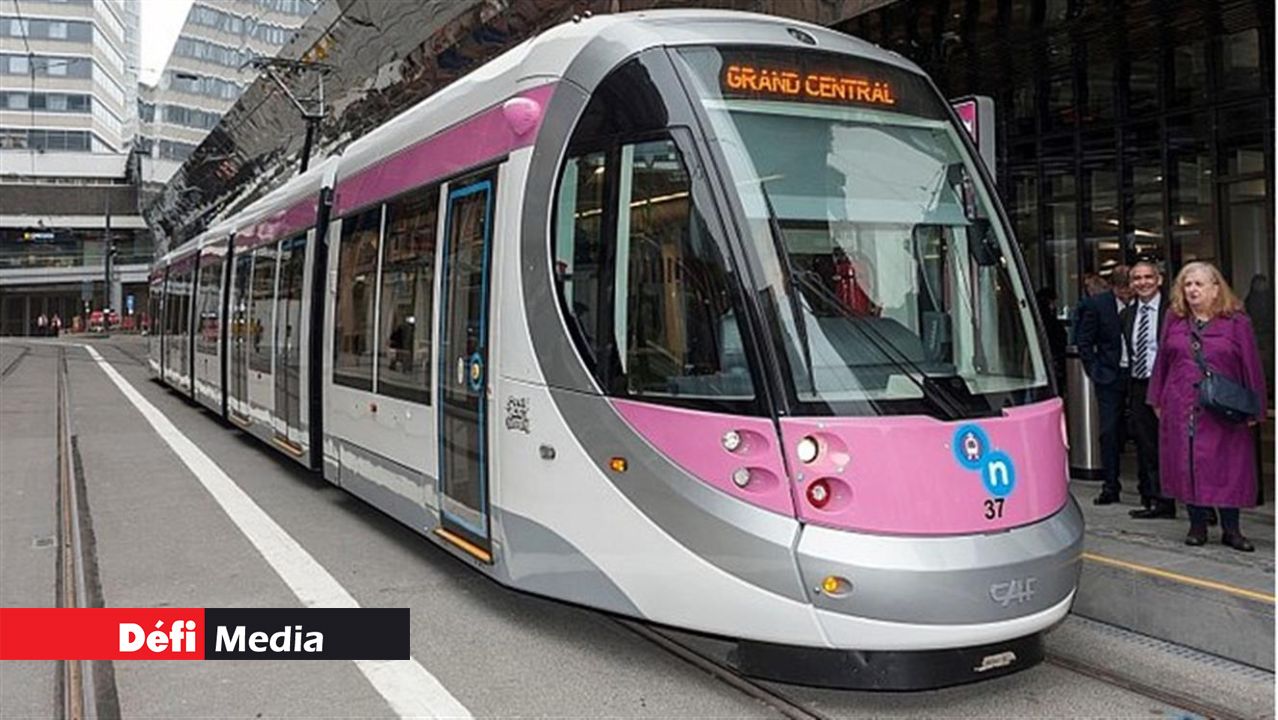
The choice is between either to forge ahead with the re-introduction of the Mauritian Railway System to propel Mauritius in an era of modernisation and progress for centuries to come or to abandon the project thus taking regressive steps towards socio-economic gloom and uncertainty. The choice is clear. A court of law can neither block nor delay this project but can only ensure that aggrieved parties are adequately compensated.
While watching a kettle boil, James Watt (1736-1819) was of opinion that if the steam which comes out could be encapsulated, it could be used as power to drive steam engines more efficiently with minimum waste. Watt introduced a separate condenser which radically improved the power, efficiency and cost-effectiveness of steam engines. Although steam engines used in trains have been replaced by more modern electric-driven engines, the train, a British invention [ref. Robert Louis Stephenson (1781-1848)], was the backbone of the Industrial Revolution in Britain. It is said that «The development of railroads was one of the most important phenomena of the Industrial Revolution». And the British even introduced the train in its former colonies like India and Mauritius. Many other countries introduced the train as the major plank of their transport system – the whole of Europe, the USA, Canada, Russia, and many more. A railway system in any country is an essential feature of transport and a hallmark of modernisation and progress.
Why is it that the re-introduction of railways in Mauritius should be fraught with such opposition when it is a must and has been delayed long enough after trains were removed in 1964 through gross miscalculation? Can we imagine what the US or France or Russia or India would have been like without a railway transport system?
History of Mauritian Railways
Rail transport in Mauritius was introduced by the British in the 1860’s and was key to the socio-economic development of the country. The railway infrastructure and network was mainly divided between the Northern Line and the Midlands Line, with secondary lines also developing throughout the country. The Northern line was 31 miles long and served the districts of Pamplemousses, Rivière du Rempart and Flacq with the last station at Grande Rivière Sud-Est. The Midlands Line covered 31 miles and became operational in 1865, and it connected the capital Port-Louis to Mahebourg passing through Beau Bassin, Rose Hill, Quatre Bornes, Phoenix, Vacoas, Curepipe and Rose Belle.
Secondary lines were also created. The 26-mile long Moka-Flacq Line (1876) served Plaines Wilhems, Moka and Flacq to Rivière Sèche. The 11-mile Savanne Line was connected to the Midlands Line at Rose-Belle and served the Savanne District to Souillac. While the 4-mile Long Mountain Branch opened in 1903, the 13-mile Black River Line connected Port Louis to Tamarin in 1904.
Given that sugar cane was then the backbone of the Mauritian economy, the rolling stock was also used to transport sugar canes from sugar plantations to the sugar mills both economically and efficiently. Those lines were referred to as Sugar Mill Lines.
The contribution of the Mauritian Railway Network, which covered around 155 miles around the island, to socio-economic progress in Mauritius is undeniable. It connected villages to towns, thus helping their development.
The Mauritian Railways also contributed to education as it helped transport students to towns where the schools were located at the time. Commerce with various regions were made easy and people interacted with one another. The railways created a both an economic and social revolution.
However, because the Mauritian Railways were in deficit, the British decided to close down the network. Lack of profitability was supposedly the deciding factor. The last passenger train journey was on 31 March 1956 between Port-Louis and Curepipe. But transport of sugar and goods carried on till 1964 after which the railway network was «dismantled and sold as scrap metal» to South Africa and India.
A very sad story indeed because essential services like public transport, water, and electricity have to be provided by law irrespective of profitability. In many countries like France and Germany, such services are subsidised by government.
What did SSR do to save the Mauritian Railways?
This begs the question as to what did the Mauritian politicians at the time do to prevent this catastrophe. How on earth can any ruler dismantle a railway infrastructure and sell it for scrap without objections and measures to save the future of the country?
Sir Seewoosagur Ramgoolam, who completed his tertiary education in London, was a fervent defender of the British Empire, although he later joined the Mauritius Labour Party (Parti Travailliste) and campaigned for equal rights for Mauritians. But he did nothing to save the Mauritian Railways which served the masses whose rights he said he was fighting for. He aligned with the Independent Forward Block (IFB) led by the Bissoondoyal Brothers and with the Comité d'Action Musulman (CAM) led by Sir Abdool Razack Mohamed, to form the Independence Party which led to general elections in 1967 and independence in 1968. Even then, the so-called Independence Party could have re-introduced the railways as the infrastructural layout was still there, but no one even seriously fought for it and the Mauritian Railways was dead in the water.
« La Route Nationale », SSR and Sir Razack Mohamed!
Although the Mauritian road transport system was being developed like in any under-developed country, no one spoke about the ‘profitability’ of the road system. The only transport vision those politicians had after independence was to build what they called «La Route Nationale», a few miles of dual carriage way from Phoenix/Saint Jean to Pailles/Port-Louis, for the benefit of mainly car owners when there were so few of them in those days.
The political argument was that SSR had such a ‘vision’ of the need for road transport in the economic development of the country. And many people who did not even own cars and had no idea what ‘economic development’ the “Route Nationale” was supposed to bring believed this propaganda. Many families living in Pailles lost their houses, their businesses, their lands, their livelihood, through compulsory acquisition by government, all to build a dual carriage way not needed in those days as the vast majority of the population were not car owners and depended heavily on public transport.
Like Sir Seewoosagur Ramgoolam, PM and leader of the Parti Travailliste, Sir Abdool Razack Mohamed, the then leader of the Comité d'Action Musulman (CAM), was in favour of the « Route Nationale » and the dispossessed residents in Pailles who turned to him for help received the cold shoulder. They even rebelled against Sir Razack Mohamed whose party they supported at the elections for independence. No one came to their rescue and no one took the matter to court to save the lands and houses of those residents either. No real case was made for the re-introduction of the railways. Had it been so, the lands, the houses and the businesses of those poor residents would have been saved. Yet, the so-called independence party led by SSR was supposedly fighting for the rights of the majority of Mauritians.
The Eternal Debate on the re-introduction of the Railway System
The case for the re-introduction of the railway system, the Light Railways (Metro Léger), only came up as a tool by the opposition after alternative bus services, like the CNT, Rose-Hill Transport, Triolet Bus Service, and so on, were put in place to cater for the transport needs of a growing population. Freight lorries were also introduced to ferry goods and raw materials, with all the social costs involved, such as congestion, fatal accidents, pollution, etc. Yet, trains were doing both and without congestion, with far less accidents and much quicker. It was a much safer and much more efficient mode of transport.
Various feasibility studies were said to have been carried out by consultants, engineers, and so on, for the re-introduction of railways in Mauritius. A more serious attempt was made by the previous MLP (PTr) government following the visit of the then PM, Dr Navinchandra Ramgoolam, to Singapore in 2010.
« An agreement for the provision of consultancy services for the Mauritius Light Rapid Transit (LRT) project was signed on 7 September 2012 in Port Louis by the Ministry of Public Infrastructure, National Development Unit, Land Transport and Shipping, and Singapore Cooperative Enterprise (SCE).» [http://gis.govmu.org/English/Documents/..].
As expected, the opposition criticised the project, and no progress was made, but not necessarily because of opposition politicians. The will of the government was not there as it preferred to build sub-standard and clearly dangerous motorways linking the North to the South East by cutting the feet of mountains which, in time, will certainly be subject to land slides and falling rocks, and provoke ecological disasters.
Although the present MSM/ML government (since the PMSD of Xavier-Luc Duval crossed to the opposition) was invariably against the re-introduction of railways in Mauritius, at the last 2014 general elections the government also promised to modernise the country. Hence, the government must have realised, based on sound advice, that one of the planks of such modernisation lies is the re-introduction of railways in Mauritius, a decision which SSR should have taken after independence in 1968, and a decision which successive governments should also have taken but failed to do so.
Dream come true but at a heavy price!
Under very difficult circumstances, the contract has now been signed and the long-awaited railway project is underway. This dream is finally coming true.
It is to be expected that, given government systematic delay since the railways were dismantled in 1964 and given that more buses are in service to cater for passenger transport, employing thousands of people, opposition for the re-introduction of railways has gathered greater pace. To complicate matters, much of the lands where the railway lines were originally traced have been built upon and new lines had to be found.
Ironically, only the lands, houses and businesses of the poor and the less well-off are targetted and they are paying a heavy price. Why not trace railway lines through Floréal and River Walk, for example? This is the reality of the democratic capitalism system people are forced to live in.
However, it is the duty of government to properly compensate and/or relocate the families affected by compulsory acquisitions to make way for the rail network. It seems that the government has been slow to act in this respect and that this has opened up ‘opportunities’ for opposition politicians to castigate government for what they themselves failed to do when in power, ‘opportunities’ they have been craving for, some would say perhaps even instigated. But affected people have the absolute right to demonstrate their grievances as it does not appear that they have either been prepared for the dislocation of their lives nor been given adequate support by government for their relocation. Government should look at their grievances with compassion and ignore those opposition politicians who are merely using the uprooted families for their own political gains.
Conclusion
The present government is committed to introduce the Mauritius Light Rail Transit (MLRT) system which comes complete with integrated bus services and combined ticketing system. Opposition politicians are distilling fear into the minds not only of the families affected through compulsory acquisitions but also into the minds of employees of bus companies.
Mauritians should not allow themselves to be used by power-hungry opposition politicians. They should protect their own interests through adequate compensation or relocation houses.
There is no going back on the Light Railway Project, a monumental project which defines the progress this government has set itself the task to do to propel Mauritius to new strides of economic and social modernisation and progress for centuries to come. A court of law can neither block nor delay this vast project but can only ensure that aggrieved parties are adequately compensated and relocated, if necessary.
In this modernisation process, the government should equally move away form the savage construction of hotels for tourists since tourism is a very fragile industry. It takes only one hurricane Irma like we have witnessed in the Caribbean to destroy the tourist industry. It is not acceptable that with a population of around 1.2 million, Mauritius is accommodating around 1 million tourists every year. It's madness! The Mauritian economy cannot be at the mercy of tourism and at the mercy of countries which can block tourism activities for political reasons through sanctions like they do elsewhere.
Mauritius should use modernisation and progress to diversify into the assembly/construction of vehicles, machine tools, satellites, and so on. Mauritius needs a strong manufacturing base.
M Rafic Soormally
London
09 September 2017

Notre service WhatsApp. Vous êtes témoins d`un événement d`actualité ou d`une scène insolite? Envoyez-nous vos photos ou vidéos sur le 5 259 82 00 !





















